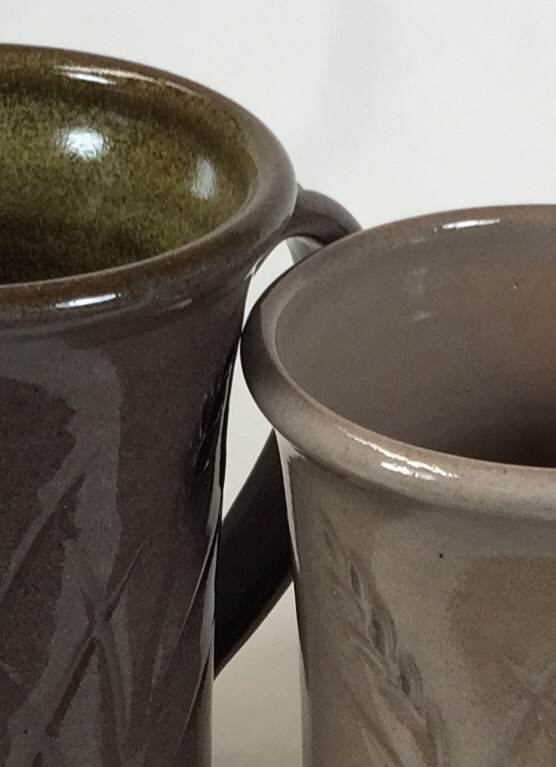Two transparent glazes on the same dark burning clay. Why different?
These two glazes are both brilliant glass-like super-transparents. But on this high-iron insight-live.com/glossary/85">stoneware only one is working. Why? G3806C (on the outside of the piece on the left) melts more, it is fluid and much more runny. This melt fluidity gives it the capacity to pass the micro-bubbles generated by the body during firing. G2926B (right) works great on porcelain but it cannot clear the clouds of micro-bubbles coming out of this body. Even the glassy smooth surface has been affected. The moral: Two base transparents are needed, each being able to host colors, opacifiers and variegators. But there is a caveat: Although reactive glazes leverage melt fluidity to develop interesting surfaces they are more tricky to use and do not fire as durable.
Pages that reference this post in the Digitalfire Reference Library:
G3806C - Cone 6 Clear Fluid-Melt transparent glaze, G2926B - Cone 6 Whiteware/Porcelain transparent glaze, An ultra-clear brilliantly-glossy cone 6 clear base glaze? Yes!, Transparent glazes often work poorly on dark stoneware bodies, Transparent Glazes, Melt Fluidity, Clouding in Ceramic Glazes

This post is one of thousands found in the Digitalfire Reference Database. Most are part of a timeline maintained by Tony Hansen. You can search that timeline on the home page of digitalfire.com.
